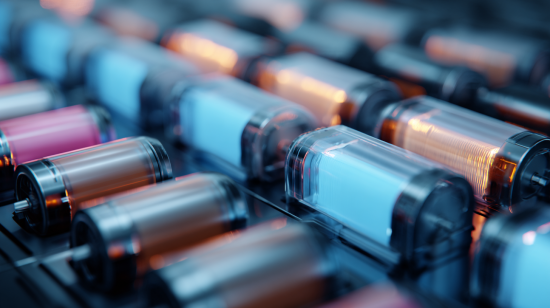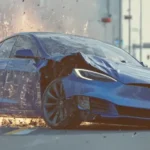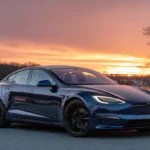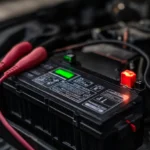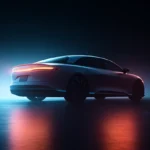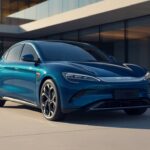Few phrases stir the EV crowd quite like “Solid-State Batteries Finally Hit Production: Which Automakers Lead the Charge?”. For more than a decade the technology sat on PowerPoint slides, forever “five years away.” In 2025 that punch-line has expired. Real factories are pressing real cells, and the brands that solved the chemistry puzzle first now enjoy a head-start that could reshape the entire car market.
1. A Turning Point in Battery History
Understanding the Future of Batteries
Early this year Honda flicked on its demonstration line in Sakura, Japan. The machines hum at a modest pace—enough for verification, not yet for million-unit scale—but they hum nonetheless, producing the world’s first automaker-made solid-state pouches. A month later BMW slid large-format cells from U.S. partner Solid Power into an i7 sedan and sent journalists on passenger laps around Munich. Meanwhile in California, QuantumScape announced that its fast-drying “Cobra” separator had entered baseline production, a step that slashes cycle times and excites its biggest shareholder, Volkswagen.
Collectively these moves mark the end of the lab era and the dawn of limited manufacturing. It is the same hinge moment lithium-ion crossed in the mid-1990s, except this time the prize—lighter packs, safer chemistry, and10-minute fast charges—lands directly in the heart of a booming EV business rather than quirky camcorders.
2. How Solid-State Tech Works in Everyday Terms
Picture today’s battery as a club sandwich: two electro-chemical slices of bread filled with gooey, flammable electrolyte mayonnaise. Solid-state swaps the mayo for a wafer—ceramic, polymer, or sulfide. Because the wafer cannot leak or catch fire, engineers can use pure lithium-metal anodes that cram more energy into the same space. The result is a battery that weighs less, runs cooler, and accepts current so quickly that a coffee break might restore 80 percent of range. If you’ve ever tried to slurp soup through a straw but then switched to water for easier flow, you already get the metaphor.
3. The First Factories: 2025 Production Begins
3.1 Toyota & Idemitsu Build a Sulfide Supply Chain
Toyota seldom rushes, yet it spent 2024 accelerating an alliance with oil refiner Idemitsu to secure a domestic stream of lithium-sulfide powder. Their Chiba plant, now under construction, will be capable of feeding roughly 50 000 solid-state cars per year once it comes online in 2027. Toyota insiders whisper that a halo Lexus coupe could showcase 1 000-kilometre cruising range as early as 2027.
3.2 Honda’s Sakura Demonstration Line Lights Up
Honda’s compact but fully featured Sakura line began outputting test cells in January 2025, with engineers clocking every minute of throughput to refine the process for scale. The company says mass production will follow “within two model cycles,” corporate speak that points to 2027-28.
3.3 BMW & Solid Power Put Cells on Public Roads
Unlike bench-top tests, BMW’s i7 mule exposes the pack to potholes, Autobahn heat cycles, and impatient fast-charge behavior from human drivers. The Bavarians claim energy density north of 400 Wh kg-¹ in test modules—about 50 percent better than today’s best lithium-ion packs.
3.4 Volkswagen and QuantumScape’s “Cobra” Breakthrough
QuantumScape’s new separator dries in seconds, not hours, carving out factory floor space and trimming operating expenses. For Volkswagen’s PowerCo subsidiary, which already plans gigafactories in Germany and Spain, this is the missing puzzle piece that could unlock production lines by 2027.
3.5 BYD and CATL—Cautious but Committed
China’s battery titans walk a finer line. BYD is openly testing a 400 Wh kg-¹ pack in its Seal sedan, but executives temper expectations, noting the tech may stay in limited trials until closer to 2030. CATL, for its part, is validating 20-Ah sample cells and signals small-batch output in 2027, all while its CEO reminds investors that large-scale commercialisation still faces durability hurdles.
4. Performance Gains You’ll Actually Notice
If numbers alone feel abstract, imagine hopping from Sarajevo to Split on a single charge, then adding another 300 kilometres after a ten-minute espresso. That’s the promise. Lab tests from QuantumScape show 80 percent charging in fifteen minutes with negligible degradation after 800 cycles, and VW engineers believe the production version can shave several minutes off that figure. More importantly, the solid electrolyte’s inherent stability means the fiery recalls that once plagued early lithium-ion laptops look vanishingly unlikely in future cars.
5. Cost, Scale, and the Race to Retool
Speed costs money, and retrofitting a 30 GWh lithium-ion plant into a solid-state workshop can run close to $100 per installed kilowatt-hour—double the cost of simply expanding existing lines, according to industry tracker Benchmark Minerals. Yet policymakers are softening the blow. Japan’s METI covers up to 40 percent of capex for solid electrolytes, while the U.S. Inflation Reduction Act throws in an extra $10 per domestic kWh, tilting boardroom spreadsheets in favour of the upgrade. (For deeper figures see the IEA Battery Cost Outlook).
Volkswagen, Toyota, and Honda all insist that, once volume climbs above 100 000 packs per year, solid-state will undercut today’s nickel-rich cells—especially as cobalt and nickel remain price-volatile.
6. Policy and Investment Winds at Automakers’ Backs
Beyond subsidies, regulations add pressure. The EU’s 2035 zero-emission mandate effectively bans new combustion powertrains, so carmakers need every efficiency trick available. Solid-state’s lighter modules help them meet fleet CO₂ targets without relying on expensive carbon credits. In the U.S., California and several ZEV-aligned states now award extra compliance points to vehicles that can demonstrate ultra-fast charging, a box solid-state is born to tick.
7. Sustainability Footprint of Solid Electrolytes
Early lifecycle analyses suggest solid-state packs cut total pack-level CO₂ by roughly a quarter, mostly because they eliminate aluminium-heavy cooling plates and slash copper in busbars. Once a pack retires, its ceramic or sulfide wafer can be ground into filler for new electrolyte layers, setting the stage for closed-loop recycling that is simpler than solvent-based methods used today.
What Drivers and Investors Should Watch Next
Solid-state batteries have marched from lab curiosity to shop-floor reality, and that shift will echo through showrooms before the decade closes. For drivers the payoff is tangible: lighter cars that travel farther and refuel almost as quickly as petrol. For investors it’s a race clock—whoever masters throughput and cost first will enjoy years of pricing power, while laggards scramble to retrofit plants they assumed were future-proof. In other words, keep one eye on the Chiba sulfide plant, another on QuantumScape’s Cobra line, and remember this headline: Solid-State Batteries Finally Hit Production: Which Automakers Lead the Charge?
